




An Overview of DNA
DNA contains all of the instructions for a living thing's structure and behaviour. Human DNA, for example, affects things like the eyes' colour and the lungs' function. Different sections of the DNA carry each bit of information. These pieces are referred to as genes.
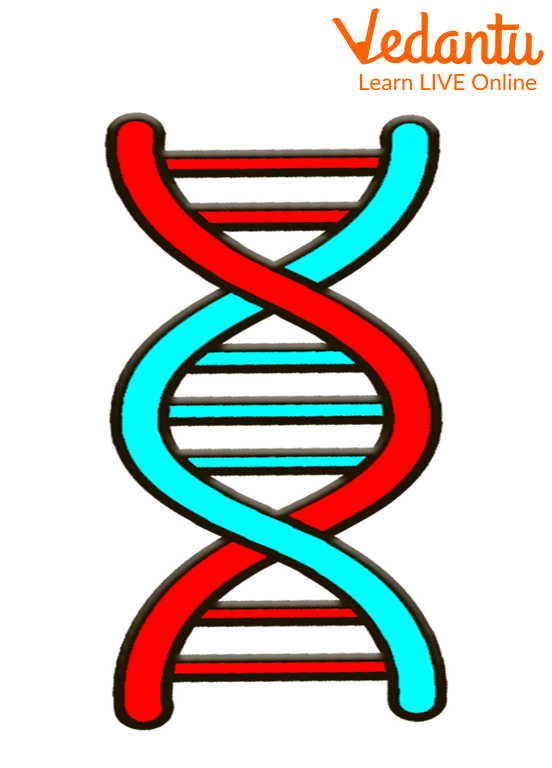
DNA
What does DNA Represent?
DNA stands for Deoxyribonucleic acid.
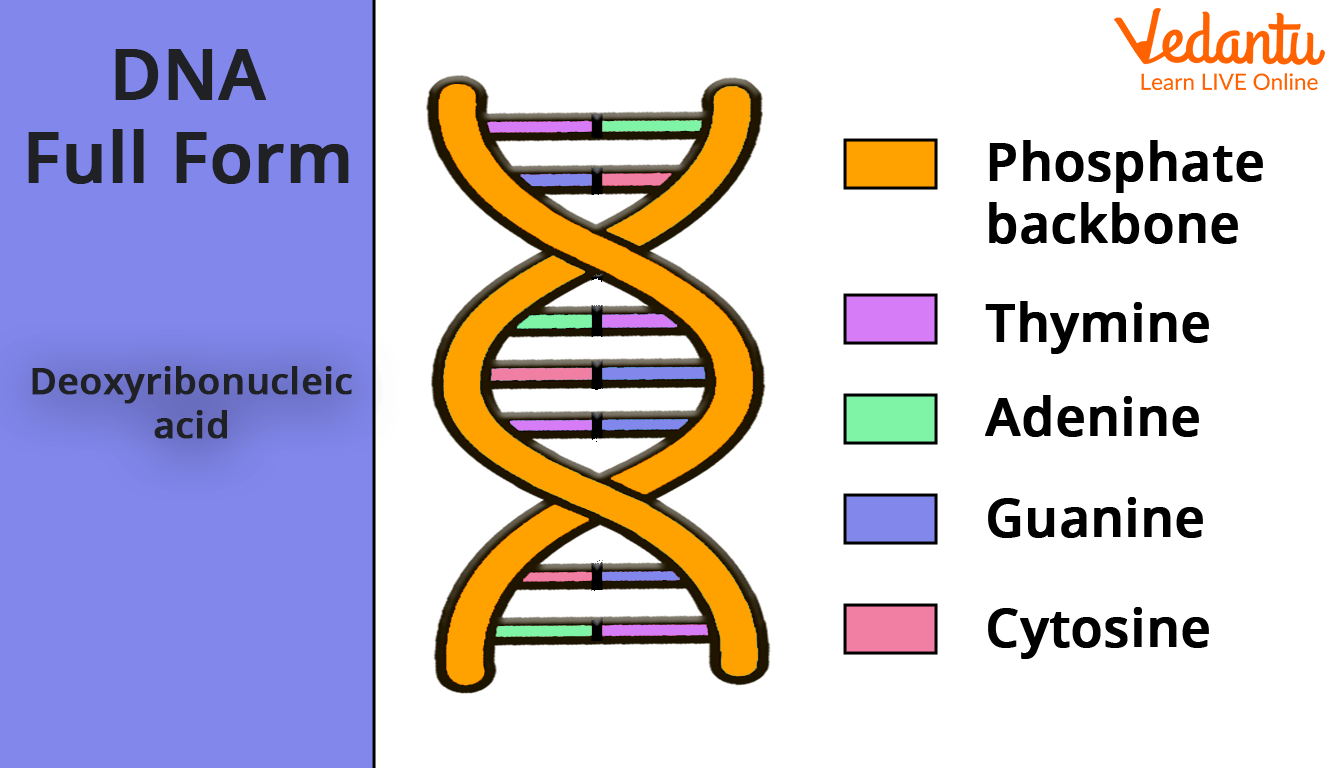
DNA Full Form
What is DNA composed of?
DNA is made up of long, thin molecules known as nucleotides. Adenine, thymine, cytosine, and guanine are the four types of nucleotides. Their first letter is typically used to represent them:
Adenine - A
Thymine - T
Cytosine - C
Guanine - G
A phosphate and deoxyribose backbone connects the nucleotides together. Sometimes, the nucleotides are referred to as "bases."
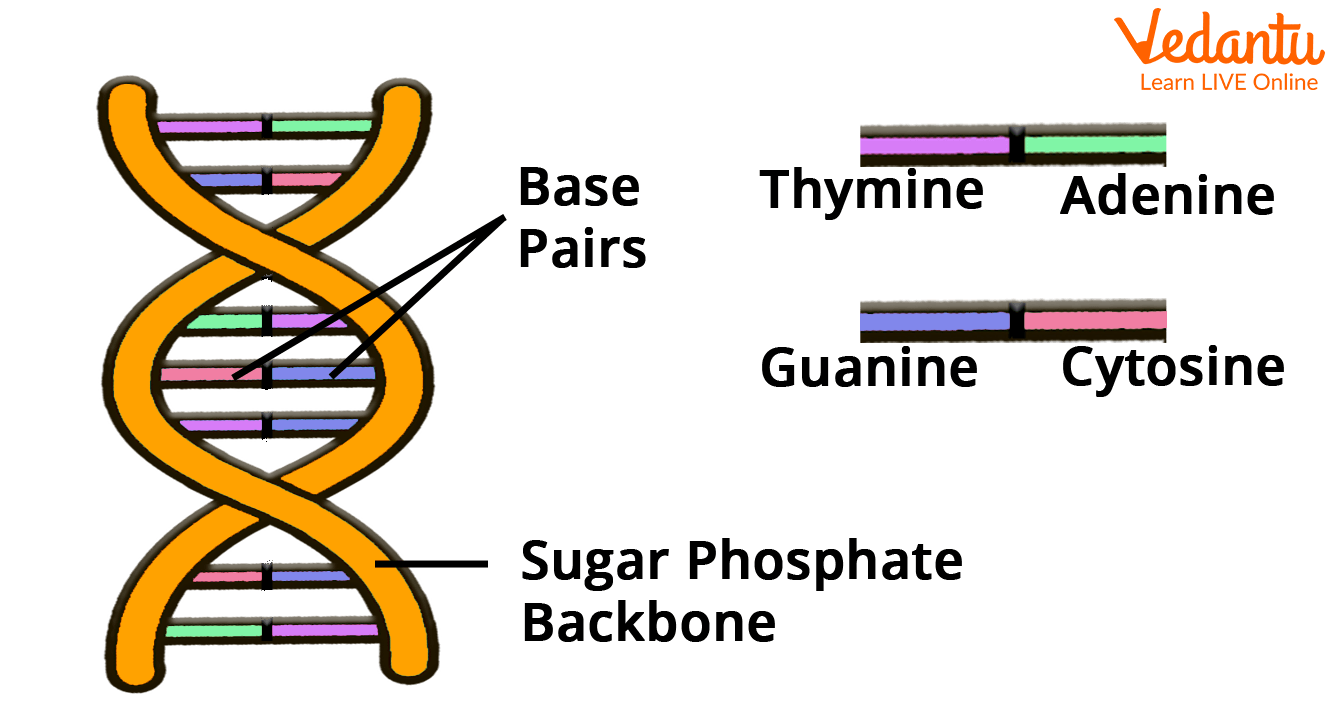
DNA Structure Diagram
Various Cell Types in the Body
There are over 210 different cell kinds in our bodies. Every cell contributes in another way to the operation of our body. For example, blood, bone, and muscle-building cells exist.
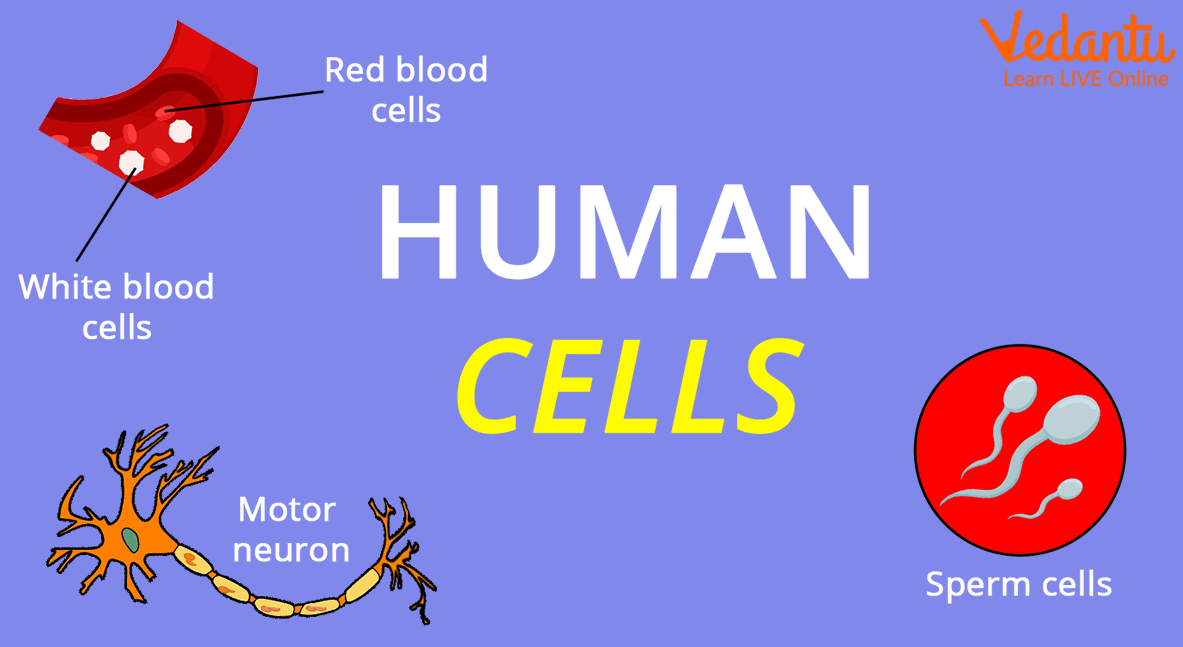
Types of Cells
How do Cells Decide Things?
DNA provides instructions to cells on what to do. Sort of like a computer program, DNA functions. DNA is the software or code, and the cell is the computer or the hardware.
The Genetic Code
The many letters of the nucleotides store the DNA code. The letters on the DNA that make the instructions are "read" by the cell. For example, a word called a codon is made up of three letters. The following is an example of a codon string:
ATC TGA GGA AAT GAC CAG
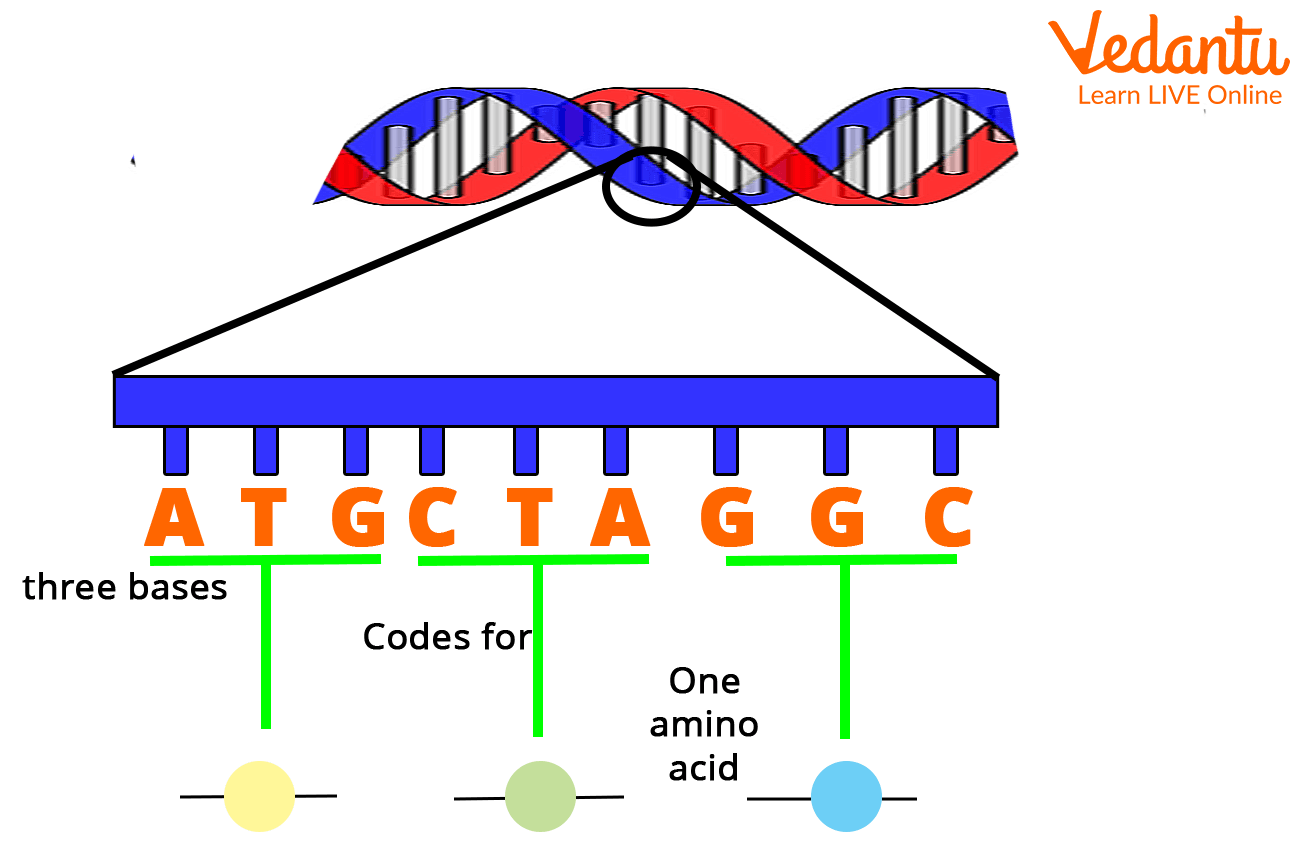
Genetic Code
Genes
Genes are collections of instructions found within each DNA strand. A gene instructs a cell on how to produce a certain protein. The cell uses proteins to carry out certain tasks, grow, and live.
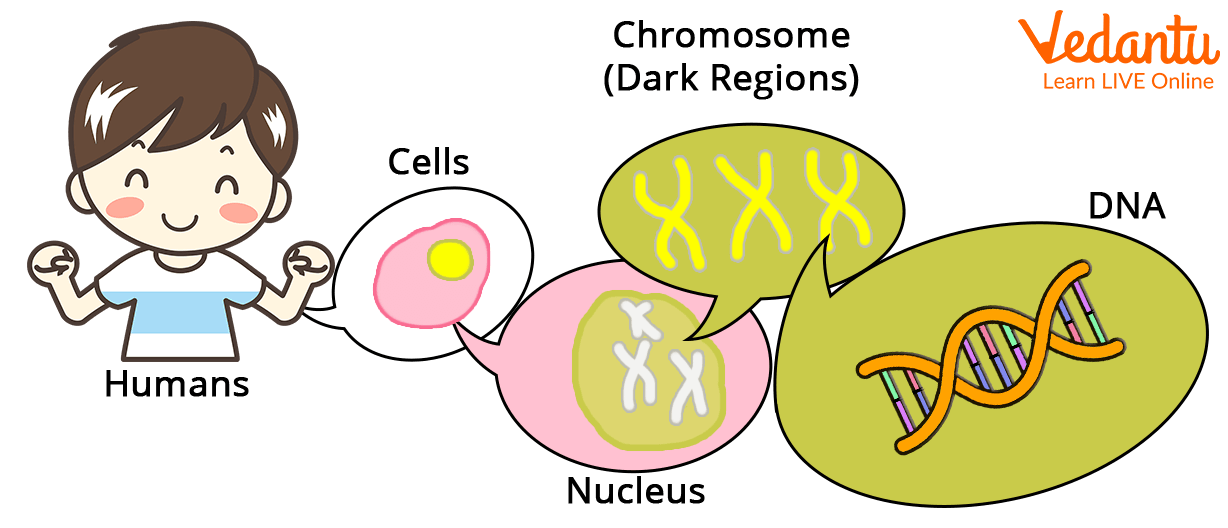
Genes
Functions of DNA
The proper functioning of DNA molecules contributes to the body's continued health. DNA aids in the production of proteins, which are essential for cell survival. DNA also enables the procreation of living beings. Biological characteristics are passed down from parents to offspring through DNA genes. Sometimes DNA contains errors. The term "mutations" refers to these errors. They can bring up illnesses and other issues.
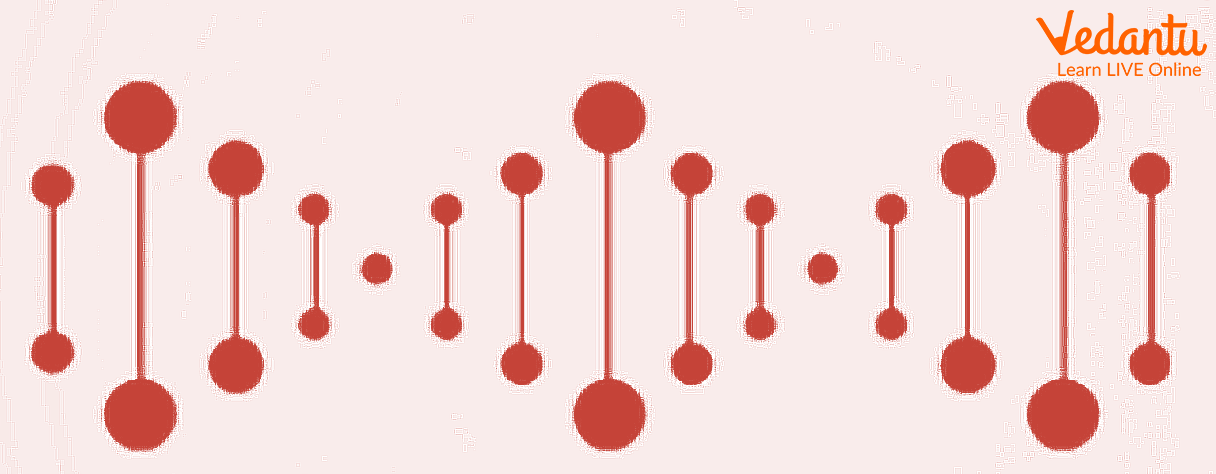
DNA Molecules
Structure of DNA
DNA has a specific form, despite seeming to be very thin, lengthy strings under a microscope. It is known as a double helix. The backbone that binds the DNA together is outside the double helix. There are two sets of intertwined backbones. The nucleotides indicated by the letters A, T, C, and G are located between the backbones. Each backbone is connected by a separate nucleotide, which binds to another nucleotide in the centre. Nucleotides can only fit together in specific combinations. Therefore, they can be compared to puzzle pieces: G and A are the only connections they have with each other.
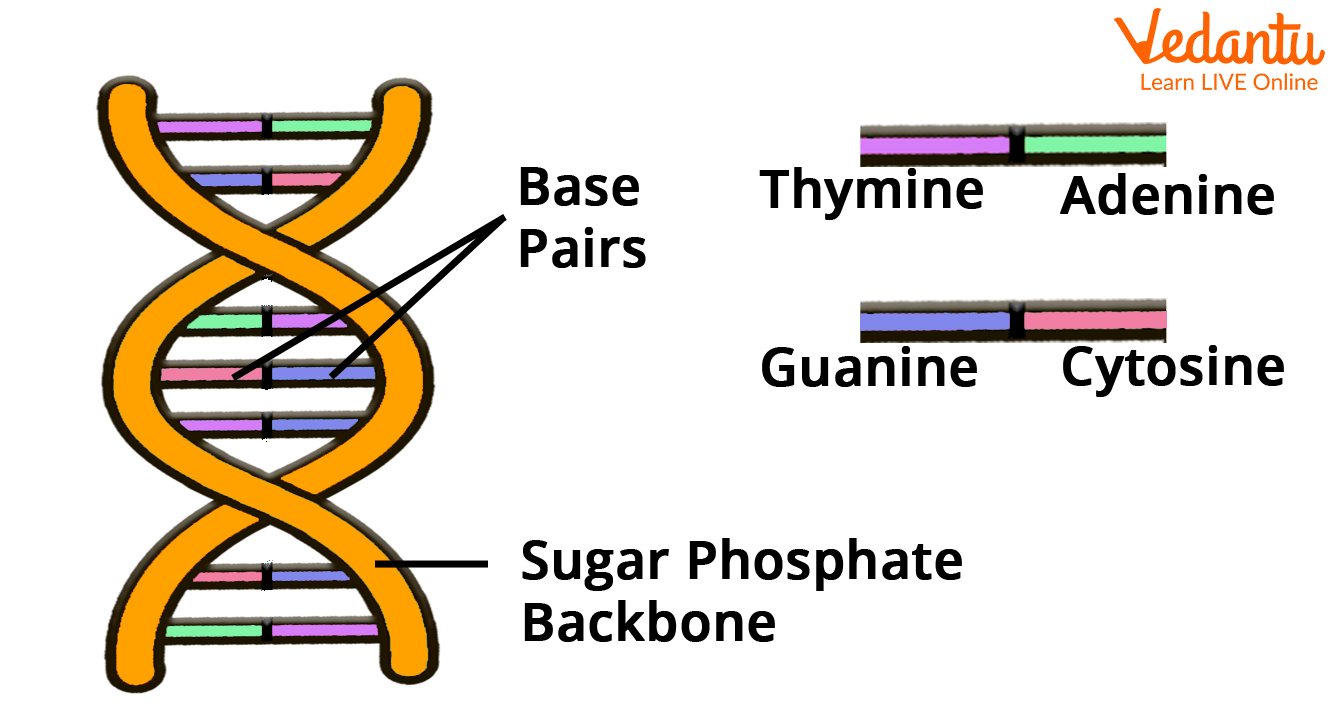
Basic DNA Structure
Interesting DNA-Related Facts
Everyone on the earth shares exactly the same 99.9% of their DNA. However, we are all different in that 0.1 percent of the population.
James Watson and Francis Crick, two scientists, discovered the double helix structure of DNA in 1953.
Your body contains enough DNA molecules to extend to the Sun and back multiple times if you were to unravel every single one of them.
Within the cell, DNA is arranged into things called chromosomes.
Friedrich Meischer, a Swiss researcher, discovered and isolated DNA for the first time in 1869.
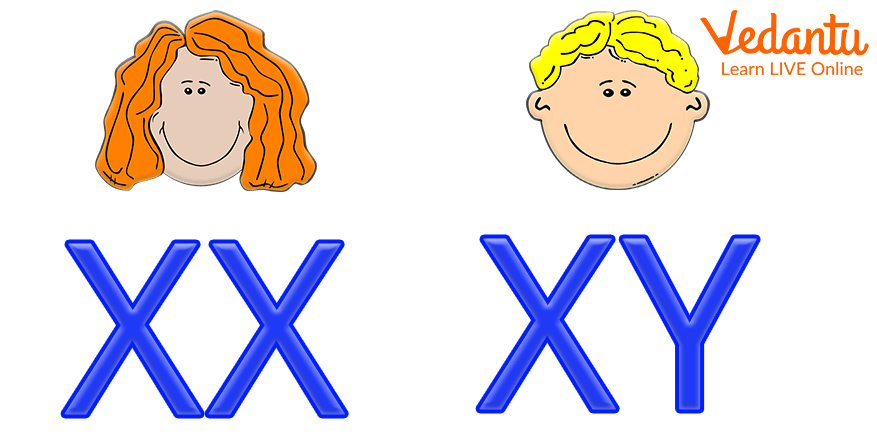
Showing Chromosomes
Summary
All living things are built and maintained according to the genetic code found in DNA, a complicated, long-chained molecule. DNA, which is present in almost all cells, contains the instructions required to make proteins, specific molecules crucial to the body's growth and operation.
Sample Questions
1. What is the complete form of DNA?
Ans: Deoxyribonucleic acid is the full form of DNA.
2. The colour of eyes, hair, and height are all determined by________.
Ans: Genes.
3. Which of the following carries genetic information?
Cell wall b) DNA C) Golgi complex
Ans: b) DNA
FAQs on DNA for Kids
1. What is a "strand" of DNA?
The structure of DNA is a double helix, which is made up of two connected strands that loop around one another to resemble a twisted ladder. Deoxyribose and phosphate groups alternately form the backbone of each strand. One of the four bases — adenine (A), cytosine (C), guanine (G), or thymine — is joined to each sugar (T).
2. What holds one strand against the other in the double helix?
A base from one strand pairs with a command from the other to form hydrogen bonds between the two strands. Although each of these hydrogen connections is weak, the group is relatively robust.
3. When do cells duplicate their DNA?
Just prior to dividing, cells replicate or duplicate their DNA. Mitosis is the name given to the process of cell division. The cell requires two copies of its DNA because it is splitting; one copy must be preserved by the parent cell and the other must be transferred to the daughter cell.
4. What is a DNA sample?
An individual's DNA sample is any tissue, fluid, or other body samples that can be used for a DNA study. When biological evidence is available, DNA has the potential to incredibly accurately identify criminals. DNA can also be used to clear criminals and acquit those who have been falsely accused or convicted of crimes.









